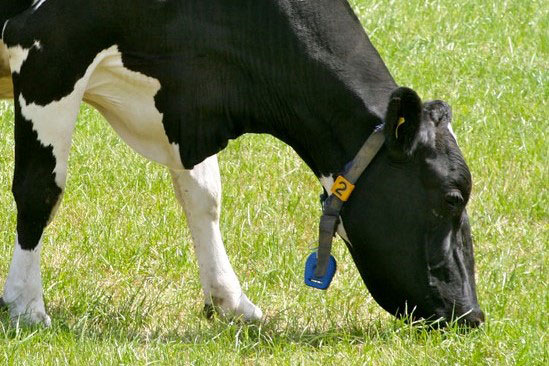by Kevin Fauvel (Inria), Véronique Masson (Univ. Rennes), Philippe Faverdin (INRA) and Alexandre Termier (Univ. Rennes)
A multi-disciplinary team of experts from Inria and INRA are working towards improving farmers’ income and working conditions in an environmentally friendly manner.
As underlined in the last EU Agricultural Outlook 2017-2030 of the European Commission, growing global and EU demand is expected to support world dairy markets in the long term. However, farm economic viability encourages an increasing herd size. As a response, precision livestock farming (PLF) is a way to improve farm economic performance [1]. PLF is the use of continuous information to optimise individualised animal management. In addition, studies reveal that PLF can help enhance animal welfare [2], environmental sustainability [2] and working conditions [3].
Dairy Management
In dairy farming, data is collected through different types of sensors based on animals (e.g., temperature, accelerometer, feed intake, weight), buildings (e.g., temperature, humidity) or milking robots (e.g., volume, milk composition). These sensors are common in today’s farms and facilitate activity reporting.
However, the level of data analysis provided does not allow the farmer to make a decision such as inseminate or give medical treatment. Indeed, alerts from current devices often contain too many false positives to be reliable and the level of detail is too high to reduce the workload. For example, false positives for disease detection may result in extra medical treatment and monitoring costs, the inverse of the initial intent. Another key management aspect is heat detection for insemination purposes. It is fundamental because a cow must have a calf to begin lactating and is expected to give birth once a year thereafter to maintain a certain level of production. Thus, false positives for ovulation phase detection can lead to suboptimal production, additional semen costs and decisions to cull cows due to reproductive problems.

Figure 1: A cow equipped with an activity meter.
Research Project
Current techniques used by animal scientists focus mostly on mono-sensor approaches (e.g., accelerometer), which are often insufficient to reduce false positives and ease decision-making. For specific diagnostics such as ovulation detection, there exist efficient mono-sensor approaches such as progesterone dosage in milk. However, such technologies remain too expensive for a massive implementation in dairy farming.
Our goal is to use widespread sensors to provide reliable recommendations to facilitate farmers’ decision-making about insemination, disease detection and animal selection. Our aim is to combine common sensors in dairy management (e.g., accelerometer and temperature) in order to diagnose events and elaborate upon these recommendations. This problem structure requires the use of machine learning methods. Thanks to an experimental farm, labeled data is available. The challenge is to design new algorithms which take into account data heterogeneity, both owing to their nature (e.g., temperature, weight, feed intake) and time scales (e.g., each five minutes, twice a day, daily).
Indeed, our approach will rely on multivariate time series classification and no existing method is designed to efficiently handle data having different time scales per dimension. First, most methods are window based: they extract features with the same temporal granularity per variable. Then, among methods specific to each variable properties, no exhaustive and efficient way to characterise different events has emerged.
The goal is to provide solutions to be transferred to the agricultural sector. This work is led by Inria LACODAM and INRA PEGASE teams in France under the #DigitAg initiative. #DigitAg is the French Digital Agriculture Convergence Lab, which brings together 360 researchers and higher education teachers from leading French organisations in this field. It is supported by the French state through the National Agency for Research funding with the reference ANR-16-CONV-0004.
References:
[1] W. Steeneveld et al. : “Characterization of Dutch dairy farms using sensor systems for cow management”, Journal of Dairy Science, 2015
[2] D. Berckmans: “Precision livestock farming technologies for welfare management in intensive livestock systems”, Revue Scientifique et technique, 2014
[3] RL. Schewe, D. Stuart: “Diversity in agricultural technology adoption: How are automatic milking systems used and to what end?”, Agriculture and Human Values, 2015
Please contact:
Kevin Fauvel, Inria, France,
Alexandre Termier, Univ. Rennes, France,










